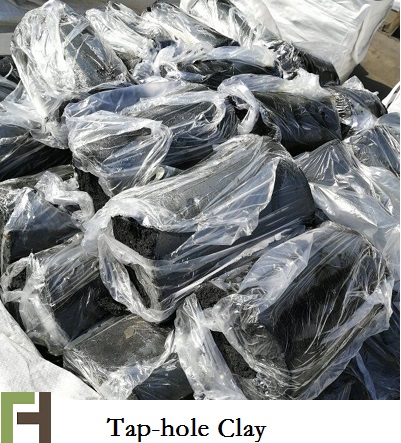The composition of tap hole clay can be divided into two parts - refractory aggregate and binder. Refractory aggregate refers to corundum, mullite, coke gem raw materials and coke and other modified materials; Binder for water or tar pitch and phenolic resin and other organic materials, but also added additives, expansion agent. Aggregate according to a certain size and weight of the matrix, in the combination of binder to make it has a certain degree of plasticity, so that it can be inserted into the iron mouth blocking molten iron. With water as the binder is called water based taphole clay, with dehydrated tar, anhydrous resin and other organic materials as the binder is called waterless tap hole clay.
The choice of tap hole clay should be determined according to the power of the furnace, smelting strength, the working ability of thetap hole clay and opening machine and the cost of tap hole clay.
The existing problems of tap hole clay for high power submerged arc furnace
1) Due to the high sintering strength, the prominent problem is that it is difficult to open the iron orifice. Sometimes, only oxygen gun can be used to open the iron orifice, which damages the structure of the iron orifice.
2) Poor corrosion resistance and erosion resistance, easy opening and reaming of iron orifice, affecting iron output, and difficult maintenance of iron orifice.
3) Damp mud phenomenon, the tap hole clay needs to be dried for too long, the clay is not dry when the iron, easy to flow.
4) Poor plasticity, difficult to plug the mud, easy to cause shallow iron mouth depth.
